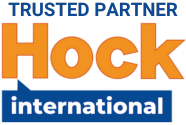The Financial Risk Manager (FRM) designation isn’t just another certificate; it’s a significant step that can truly accelerate your career in the financial world. Think of it as a key, opening doors to specialized roles and faster growth within the sector. This guide dives into the job opportunities an FRM course unlocks, highlighting where your newly honed skills are most valued, how to best showcase your enhanced profile, and what you can realistically expect for career progression and pay.
Table of Contents
The Strategic Value of Your FRM Certification
Earning your FRM certification signals that you meet a global benchmark for expertise in financial risk management. It’s solid proof of your capability to pinpoint, quantify, and manage the diverse risks – from market shifts and credit issues to operational glitches and liquidity challenges – that financial institutions juggle daily. This specialized knowledge is in huge demand today, as companies increasingly rely on strong risk frameworks. Why? To stay stable, meet tough regulations, and make smart, informed business decisions. Your FRM equips you with the sharp analytical skills and deep theoretical knowledge needed to make a real impact in these crucial areas.
Key Roles for FRM Holders
The FRM certification primes you for a variety of influential positions across the financial industry and even beyond. These jobs demand keen analytical abilities and a firm grasp of risk principles. You’ll commonly find FRM professionals in roles like:
- Risk Analyst: Starting out or in a mid-level spot, you’ll concentrate on analyzing data, building risk models, and preparing reports, usually working closely with experienced managers.
- Credit Risk Analyst/Manager: Specializing in assessing the chance that individuals, businesses, or even sovereign entities might default on their obligations. You’ll evaluate creditworthiness and manage potential losses.
- Market Risk Analyst/Manager: Your focus will be on risks stemming from shifts in market prices, such as interest rates, exchange rates, or stock prices.
- Operational Risk Analyst/Manager: This role involves identifying and managing risks arising from internal process failures, human error, system malfunctions, or external events.
- Regulatory Risk Analyst/Compliance Officer: Ensuring the organization complies with relevant financial regulations and reporting standards is key here – a rapidly growing field.
- Treasury/Liquidity Risk Manager: You’ll manage the firm’s cash flows and ensure it can meet its short-term obligations under various scenarios.
- Quantitative Analyst (Quant): This position calls for a love of complex math, developing and implementing models for pricing financial instruments, assessing risk (like VaR and Expected Shortfall), and creating trading strategies.
These positions are absolutely vital for the health and stability of any financial institution, making FRM professionals highly valued.
Top Destinations for FRM Talent
Professionals holding the FRM are sought after globally by a wide range of organizations. Your skills are particularly hot commodities in places where managing financial risk is central to the business.
Leading employers actively hiring FRMs include:
Leading Commercial and Investment Banks, such as J.P. Morgan, Goldman Sachs, and HSBC internationally, alongside key Indian banks like ICICI Bank and HDFC Bank. They integrate FRMs into various crucial areas, from risk oversight to trading and compliance.
Major Asset Management Firms, including giants like BlackRock and Vanguard. They look to FRMs for help managing portfolio risk and building investment approaches optimized for risk.
Insurance Companies find FRMs essential for assessing the risks involved in underwriting policies, managing their significant investment holdings, and ensuring their overall financial health and solvency.
Prominent Consulting Firms (like Deloitte, PwC, EY, and KPMG) employ FRM professionals to offer specialized risk management advice to a wide array of clients across different sectors.
Regulatory Agencies, such as Central Banks and national financial regulators, count on FRMs to assist in developing and upholding the risk regulations necessary for a stable financial system.
Rating Agencies (like Moody’s and Standard & Poor’s) leverage FRM expertise specifically to analyze and evaluate the credit risk tied to companies and financial products.
Holding the FRM certification significantly boosts your profile and credibility when you apply to these highly respected organizations.
Tips to Update Your Curriculum Vitae
Your resume is often the first impression you make. With that valuable FRM certificate, you need to update it smartly to make sure this major achievement stands out.
Here’s how to do it:
- Put it Upfront: Add a dedicated section for “Certifications,” placed high on your resume. Clearly list “Financial Risk Manager (FRM) – Certified by GARP”. If you’ve passed Part I but aren’t fully certified yet, simply state “FRM Part I Passed”.
- Keywords are Key: Look at the job descriptions for the roles you’re interested in. Weave those relevant risk management keywords straight from the FRM curriculum into your resume summary and the descriptions of your past roles. Terms like “market risk analysis,” “credit risk modeling,” “operational risk frameworks,” “regulatory compliance,” “VaR calculation,” “stress testing,” and “risk mitigation strategies” carry weight.
- Show, Don’t Just Tell (Quantify!): Whenever possible, put numbers to your responsibilities and achievements in previous jobs, connecting them back to risk management. Instead of a vague “managed risk,” try something like “Implemented a new risk reporting system, cutting reporting time by 20%” or “Analyzed credit portfolios to spot potential risks, contributing to a 5% drop in non-performing assets.”
- Spin Your Experience: Even if your previous roles weren’t strictly “risk” jobs, highlight any tasks or projects where you used risk-related knowledge, analytical skills, or dealt with potential issues.
Taking the time to update your resume effectively ensures that recruiters and hiring managers immediately see the significant value your FRM certification brings to the table.
What About Salary Expectations?
A definite plus side to getting your FRM certification is the potential for earning a higher salary compared to peers in similar roles who don’t have it. Salaries for FRM professionals are very competitive and generally climb significantly as you gain more experience and take on bigger responsibilities.
While these are just rough estimates, here’s a general idea of typical salary ranges based on experience. Keep in mind, these numbers can swing quite a bit depending on where you work, the specific company and role, and the industry:
| Experience Level | Typical Roles | Indicative Annual Salary Range (INR) |
| Entry-Level | Risk Analyst, Junior Credit/Market Analyst | ₹6,00,000 – ₹10,00,000 |
| Mid-Level | Senior Risk Analyst, Risk Manager | ₹12,00,000 – ₹20,00,000 |
| Senior-Level | Head of Risk, Chief Risk Officer (CRO), Director | ₹25,00,000 – ₹50,00,000+ |
Beyond just the base pay, compensation packages often include performance bonuses and other perks, especially at larger financial firms. The strong demand for skilled risk professionals really helps push these compensation trends favorably for those with FRM course job opportunities.
Putting Knowledge to Work and Staying Sharp
The FRM gives you a rock-solid foundation in theory, but the fast-paced world of finance demands that you can use that knowledge. Markets are always moving, risks pop up in new ways, and knowing how to apply those concepts in messy, real-world situations is crucial for success. Working through real case studies and tackling practical problems is key to bridging the gap between textbook learning and being truly ready for the job.
Recognizing this need, places like Unique Global Education often build hands-on learning into their programs. They incorporate practical problems and real-life case studies specifically to help you apply what you learn. This focus on actual market scenarios deepens your understanding and gets you ready for the daily challenges of risk management. Plus, they often support your ongoing learning, maybe by hosting free webinars to keep you current on the latest industry trends and how to apply them.
To find out more about upcoming learning opportunities or how practical training can boost your career, look into resources that emphasize real-world application.



